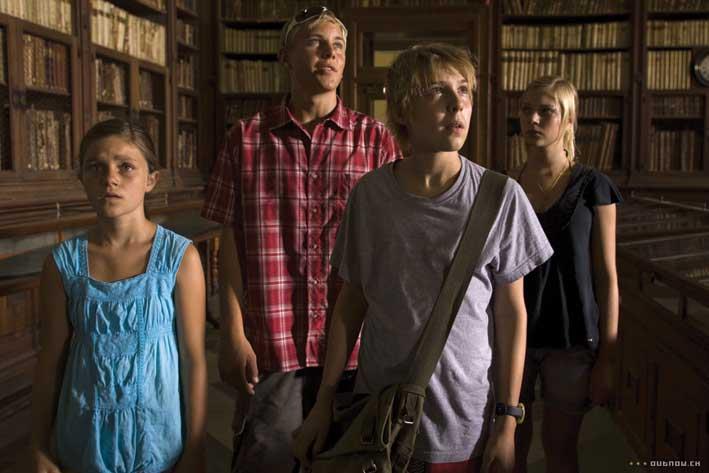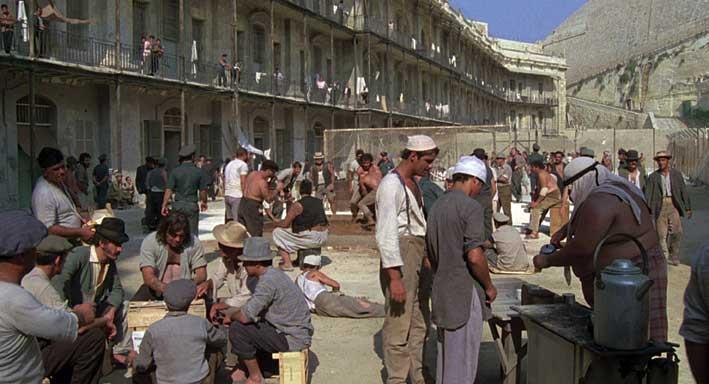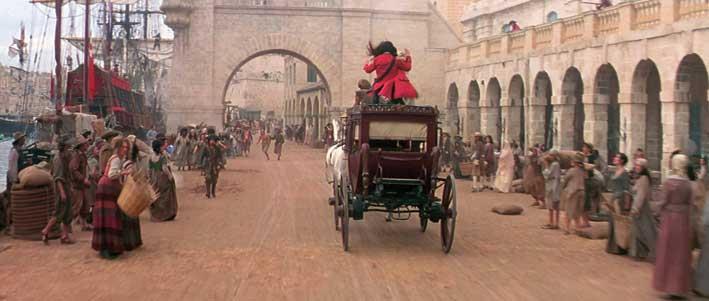The long list of productions that have been entirely or partially shot in Malta instantly reveals that the Islands offer a range of locations that manage to double for virtually anywhere - ancient or modern - in the Mediterranean, as well as elsewhere. Malta offers locations that range from grand fortified harbours, impressive cliffs, tranquil sheltered bays and quaint old villages to ultra-modern interiors, magnificent Baroque palaces, terraced fields and ancient walled citadels. Over the years, it has doubled for a myriad of locations - including Troy, Italy, France, Alexandria, Palestine, Israel and Warsaw - as well as for different periods of time from the ancient civilisations of Greece, Rome and Egypt to the 1960s.

Rick Carter, the Oscar-winning production designer for Munich (2005) said: "Malta has this kind of Mediterranean hodgepodge of culture where we could find areas that look like southern European locations in one spot and areas that look like Israel or Beirut in another". Indeed, in Munich, Malta was used to stand in for no fewer than seven cities, including Tel Aviv, Beirut, Athens and Rome. While the financial incentives granted by the Maltese government, the tanks at Rinella and various other factors are all extremely important when it comes to choosing Malta as a filming location, the viability of our locations and their sustainable use should not be underestimated or disregarded.

Although Malta has been increasingly selected as a location to stand in for other parts of the Mediterranean, it is possibly Malta's viability as a middle-eastern lookalike that attracts most attention. Among the productions for which Malta took on the role of middle-eastern locales, one finds Risen (2016), The Dovekeepers (2015), The Eichmann Show (2015), The Cut (2014) and World War Z (2013). Not only are the streets of Malta a perfect match for those one would expect to find in the Middle East, but also our Mediterranean olive-skinned appearance lends itself to setting up a quasi-similar replica of a generic Middle-Eastern atmosphere.

We do lack a desert, of course, but nonetheless desert scenes have also been successfully recreated, thanks to the use of the ever more sophisticated tricks offered by Computer Generated Imagery (CGI). In The Dovekeepers (2015), the mountain-top Jewish city of Masada was convincingly recreated by using scenes shot on a set built in a local hard-stone quarry and cleverly edited together with scenes shot inside Fort Ricasoli merged with a number of aerial shots taken by a splinter unit in Israel and Jordan.

Along with Malta's suitability for standing in for Middle-Eastern regions, it must also be acknowledged that the surge in these productions is also in part due to the continuous unrest plaguing the region. Malta offers not only a safe place for filming but also provides a safe environment where the cast and crew can relax in their free time.

Countless times, our imposing fortifications have lent themselves for impressive climactic scenes: epics such as Gladiator (2000), Agora (2009) and Game of Thrones (2011) - where the imposing fortifications serve as the backdrop for many scenes. Equally memorable, however, are the scenes shot in opulent palaces. The Grandmaster's Palace in Valletta played itself in Malta Story (1954) but it also doubled for a Baroque Roman palace in The Count of Monte Cristo (2002), the Vatican in Revelation (2001) and also a generic palace in the science-fiction/fantasy film Iron Warrior (1987). Other grand interiors that have lent themselves for film countless times include those of Palazzo Parisio in Naxxar, Villa Bologna in Attard and the National Library and Admiralty House in Valletta.

Having listed the above, however, it must not be assumed that we have an over-abundance of locations. Over the past decade alone the ever-changing landscape of the Maltese Islands has already resulted in a number of locations being made unsuitable for the shooting of scenes often needed for the epic genre. On two different occasions, the whole stretch of Bakery Wharf in Vittoriosa was convincingly converted into a film set. It stood in for Port Royal, Jamaica in Cutthroat Island (1995) and later on as the port of Marseilles in The Count of Monte Cristo (2002). With the building of the yacht marina along the whole length of the quay, such epic scenes are now unthinkable - reducing the wharf as suitable only for scenes requiring a contemporary setting.
Of course, no one can stop or even delay the development of the amenities expected in this day and age, but still, an appreciation of the basic needs of the film industry should always be borne in mind when new projects are being developed. CGI can perform many tricks, but it does have its limits! The recent restoration of Upper Fort St Elmo, praised by many for rejuvenating the space, was probably another blow to the film industry. The previously popular film location - valued for its ambience, texture and aged-look - now not only looks like new, with its restored stone work, but is also riddled with countless modern items such as light fixtures and handrails - too many to be digitally erased if the fort was used for a historical film.
It is with this in mind that models of restoration where embellishment follows modern conservation techniques while retaining the character and feel of the space in question is advocated. It is also with this in mind that it is to be hoped that an eventual restoration of the lower part of Fort St Elmo is carried out with urgency while preserving its unique atmosphere. It is this atmosphere that made it one of the most iconic landmarks in films such as Midnight Express (1978), Cutthroat Island (1995) and, most recently, World War Z (2013).
The film industry also has its share of responsibility vis-à-vis Malta's cultural, architectural and natural heritage. It cannot be stressed enough that when filming is taking place, it must be carried out with the utmost respect for both our historical and our environmental treasures. Without going into specific incidents, it should be pointed out that, nowadays, a specialised unit within the Malta Environment and Planning Authority takes every filming activity very seriously and imposes very strict conditions on what is permissible and what mitigating factors should be applied. This, coupled with frequent monitoring during the building of sets, shooting and the eventual striking of sets, has ensured the prevalence of good practice.
In conclusion, although Malta can boast such famous locations as the Azure Window in Gozo, the Blue Lagoon in Comino, Fort St Elmo in Valletta and the fortified city of Mdina, it still retains a mysterious, timeless quality that makes the Maltese landscape an enticing canvas for the film-maker to practice his art.
For several years, Jean Pierre Borg has been researching the films that have been fully or partly shot in Malta. For more information, curiosities and trivia about the Maltese film industry, he can be contacted on 7971 0271, by email to [email protected] or by visiting the Filmed in Malta Facebook page.